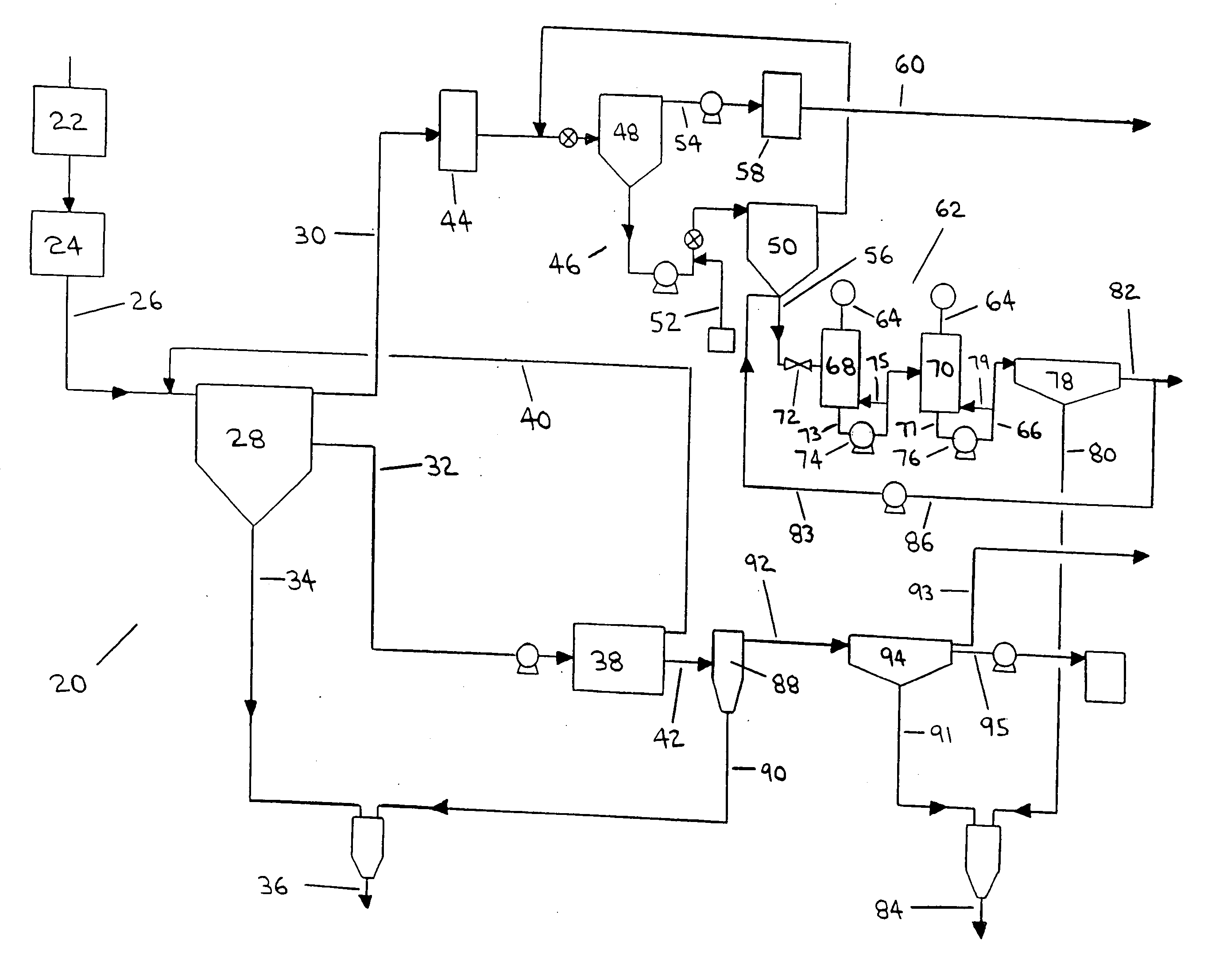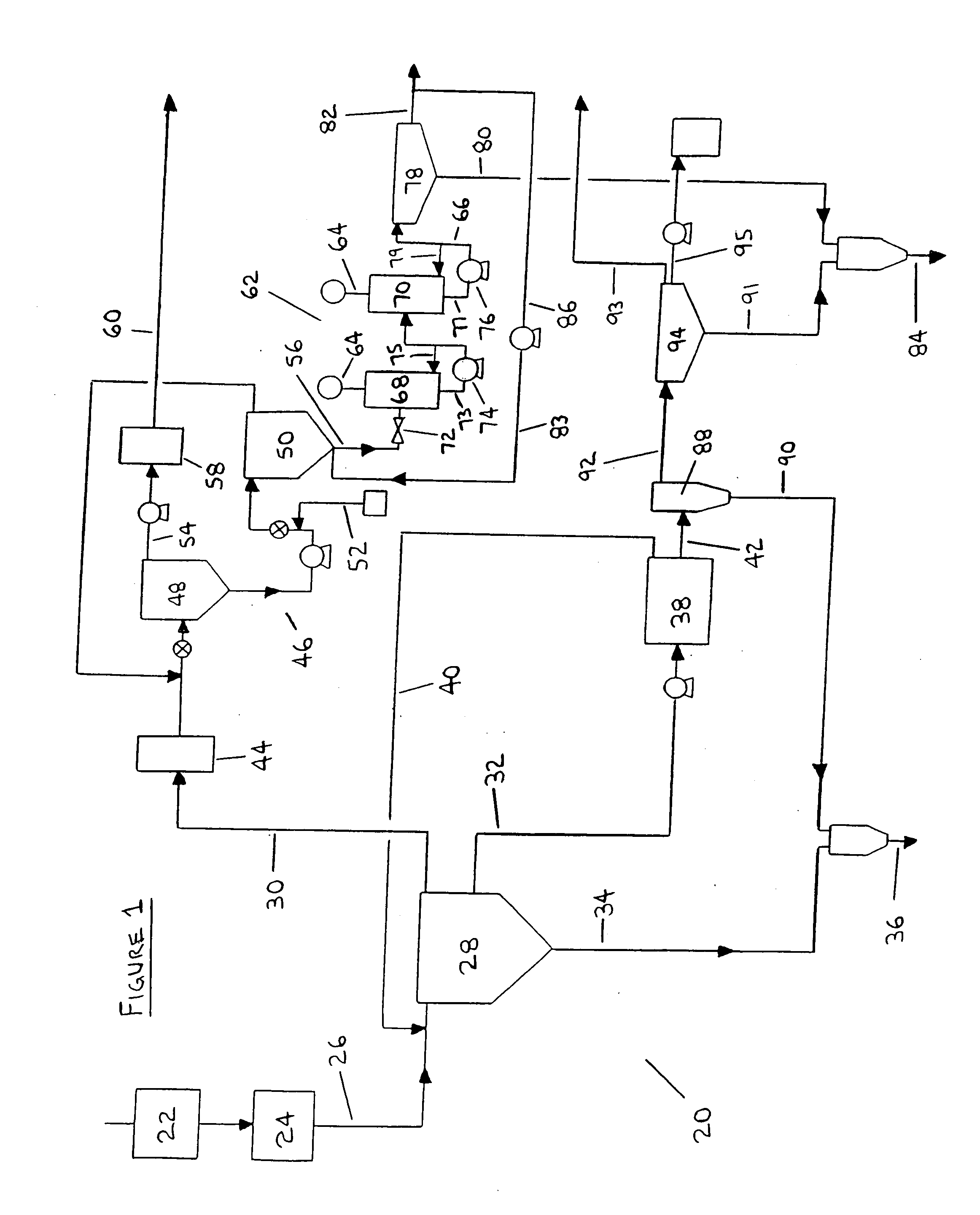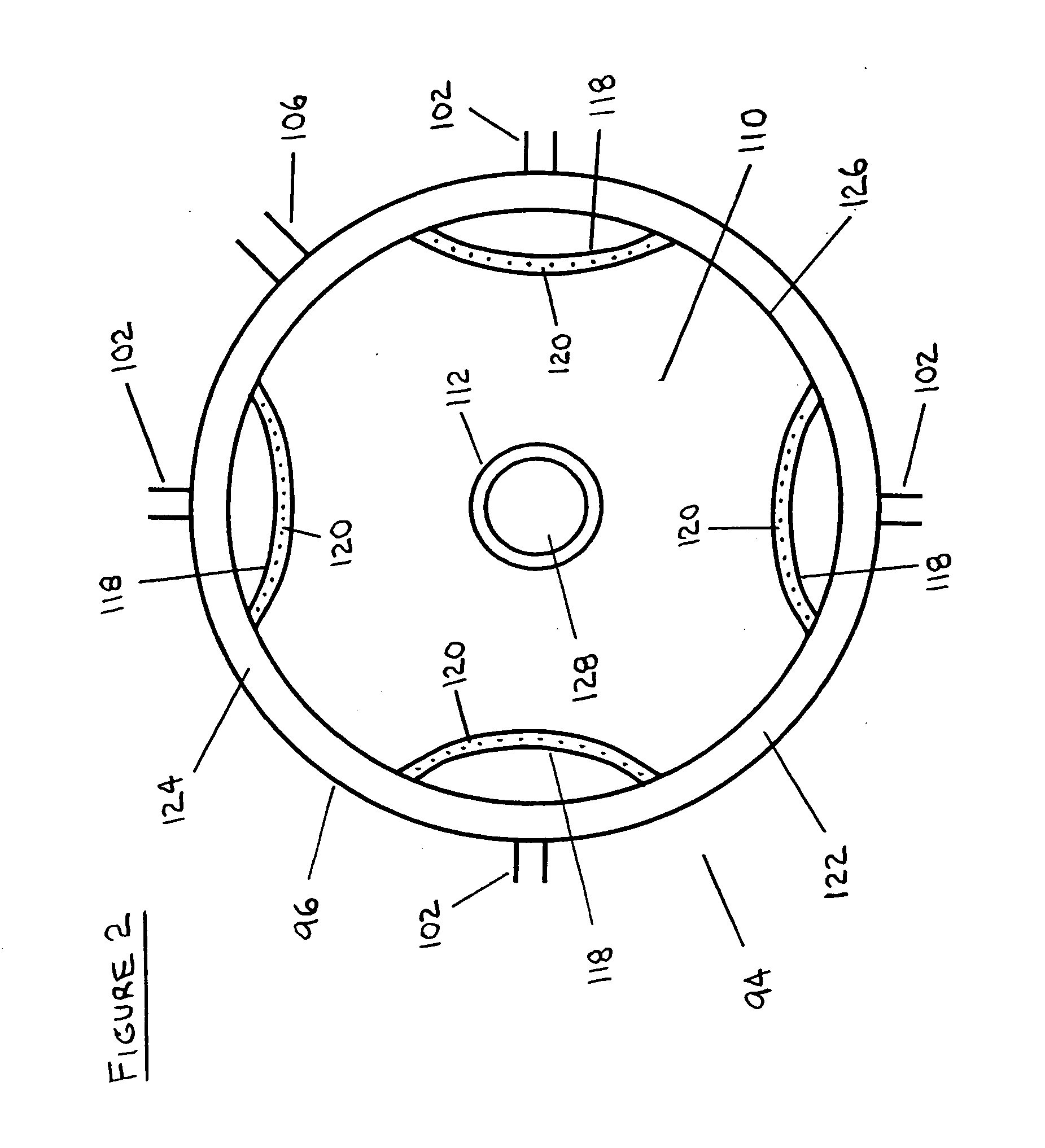Process and apparatus for treating tailings
- Summary
- Abstract
- Description
- Claims
- Application Information
AI Technical Summary
Benefits of technology
Problems solved by technology
Method used
Image
Examples
Embodiment Construction
[0099] The present invention relates to processes and apparatus for the treatment of product streams from mineral processing operations. The present invention is particularly suited to the treatment of tailings from such processes and is even more particularly suited to the treatment of tailings which comprise relatively fine solids and other impurities.
[0100] In preferred embodiments of the invention, the invention relates to the treatment of tailings obtained from oil sand processing operations and in particular, to the treatment of tailings which are obtained from either the bitumen froth stream or the middlings stream of a process for recovering bitumen from oil sand. In the preferred embodiments, the tailings are obtained from oil sand extraction processes such as the Clark Process or other comparable processes.
[0101] Preferred embodiments of the present invention are outlined in the flow diagram of FIG. 1, depicting processes of the present invention implemented in conjuncti...
PUM
 Login to View More
Login to View More Abstract
Description
Claims
Application Information
 Login to View More
Login to View More - R&D
- Intellectual Property
- Life Sciences
- Materials
- Tech Scout
- Unparalleled Data Quality
- Higher Quality Content
- 60% Fewer Hallucinations
Browse by: Latest US Patents, China's latest patents, Technical Efficacy Thesaurus, Application Domain, Technology Topic, Popular Technical Reports.
© 2025 PatSnap. All rights reserved.Legal|Privacy policy|Modern Slavery Act Transparency Statement|Sitemap|About US| Contact US: help@patsnap.com



